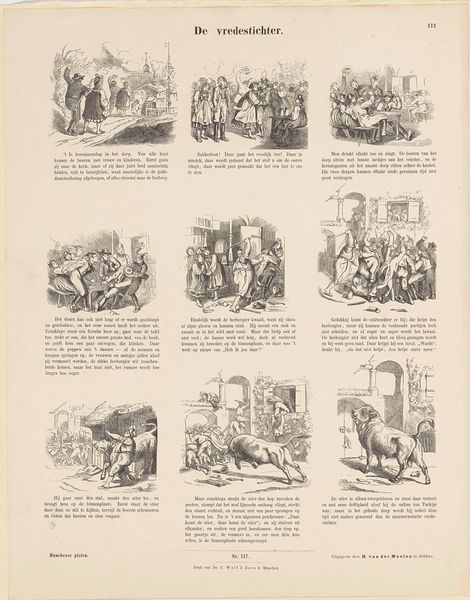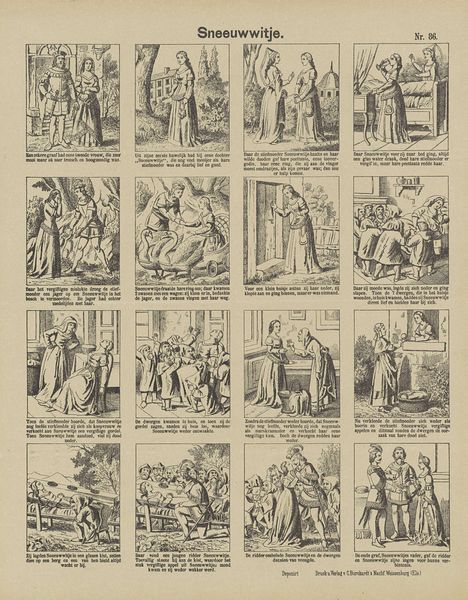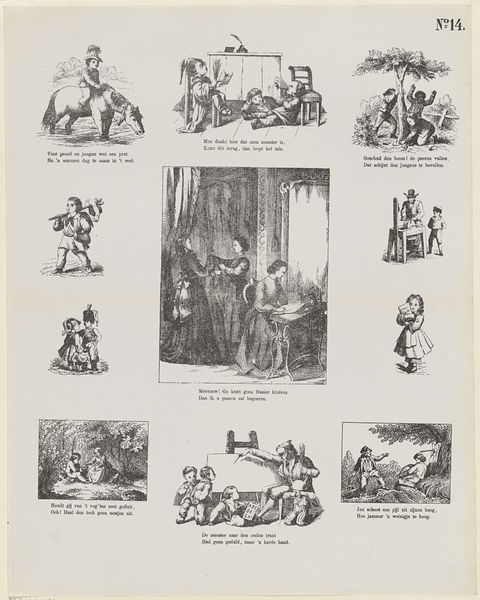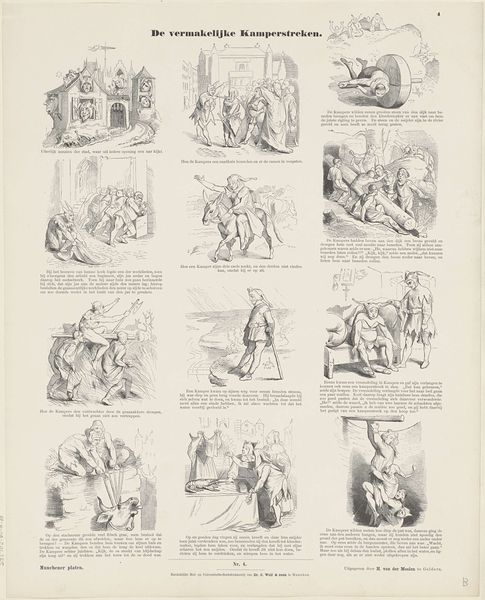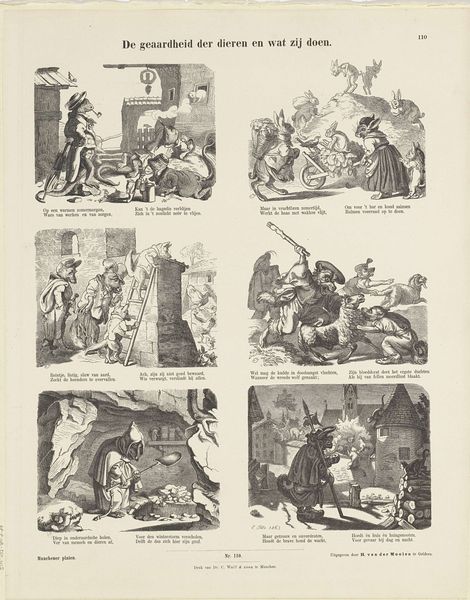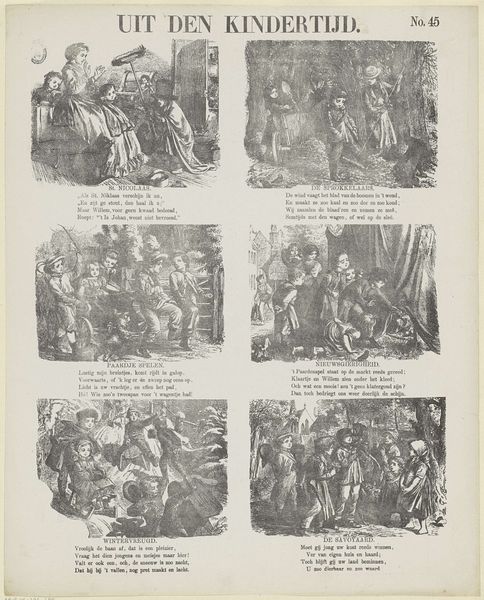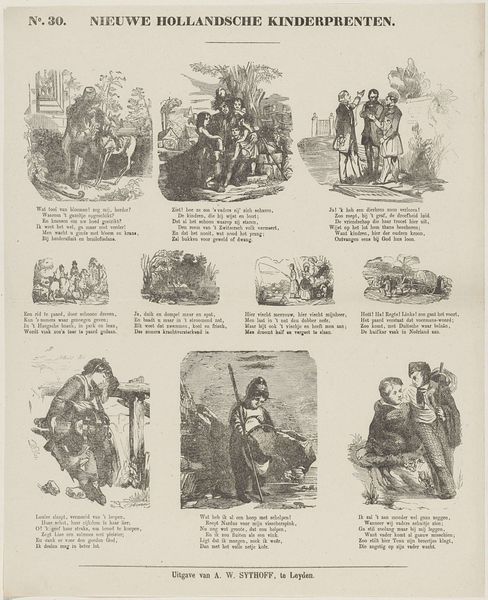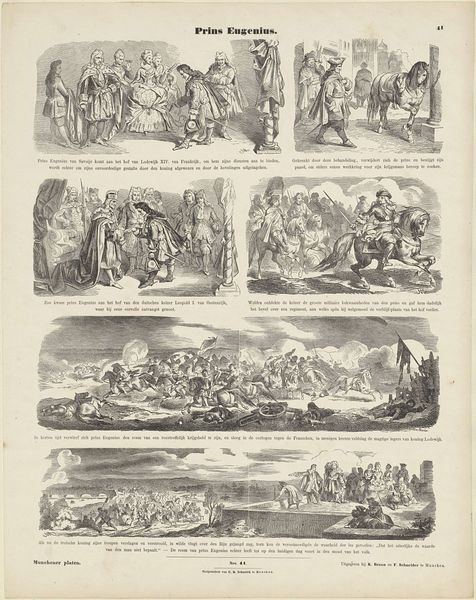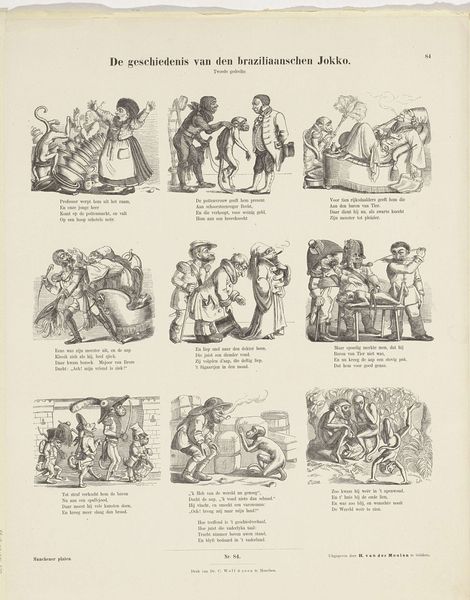
graphic-art, print, etching, pen
#
graphic-art
#
comic strip sketch
#
quirky sketch
#
narrative-art
#
dutch-golden-age
# print
#
etching
#
caricature
#
sketch book
#
personal sketchbook
#
idea generation sketch
#
sketchwork
#
comic
#
pen work
#
sketchbook drawing
#
pen
#
history-painting
#
storyboard and sketchbook work
#
sketchbook art
Dimensions: height 432 mm, width 342 mm
Copyright: Rijks Museum: Open Domain
Hermann van der Moolen created this print, "The Failed Visit," sometime in the 19th century. It's made with lithography, a process where an image is drawn on a stone or metal plate with a greasy substance, then printed. The material qualities of lithography are crucial here. Notice the fine, precise lines. Lithography allowed for relatively quick and cheap reproduction of images, making them accessible to a wider audience. The use of printmaking underlines the expansion of media at the time. The story unfolding in the panels—a man's disastrous attempt to visit someone—plays into this context. It's a form of entertainment for a rising literate middle class. Consider the labor involved: the artist, the lithographer, the printer. Each contributes to a process driven by capitalist production and consumption. "The Failed Visit" isn't just a funny story; it's a product of its time, reflecting new technologies and social structures. Appreciating these details enriches our understanding, moving beyond simple interpretation.
Comments
No comments
Be the first to comment and join the conversation on the ultimate creative platform.

